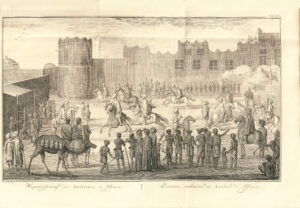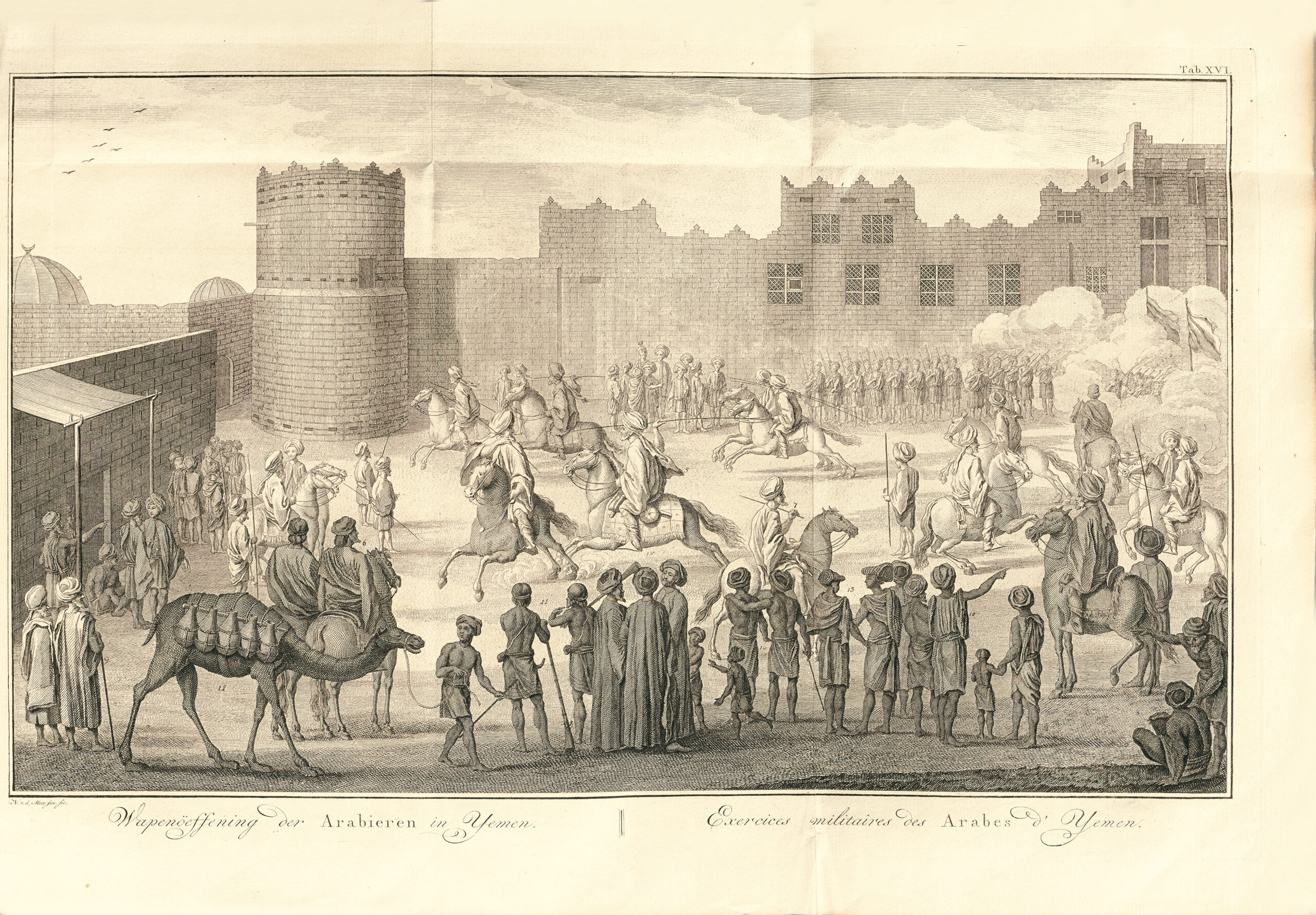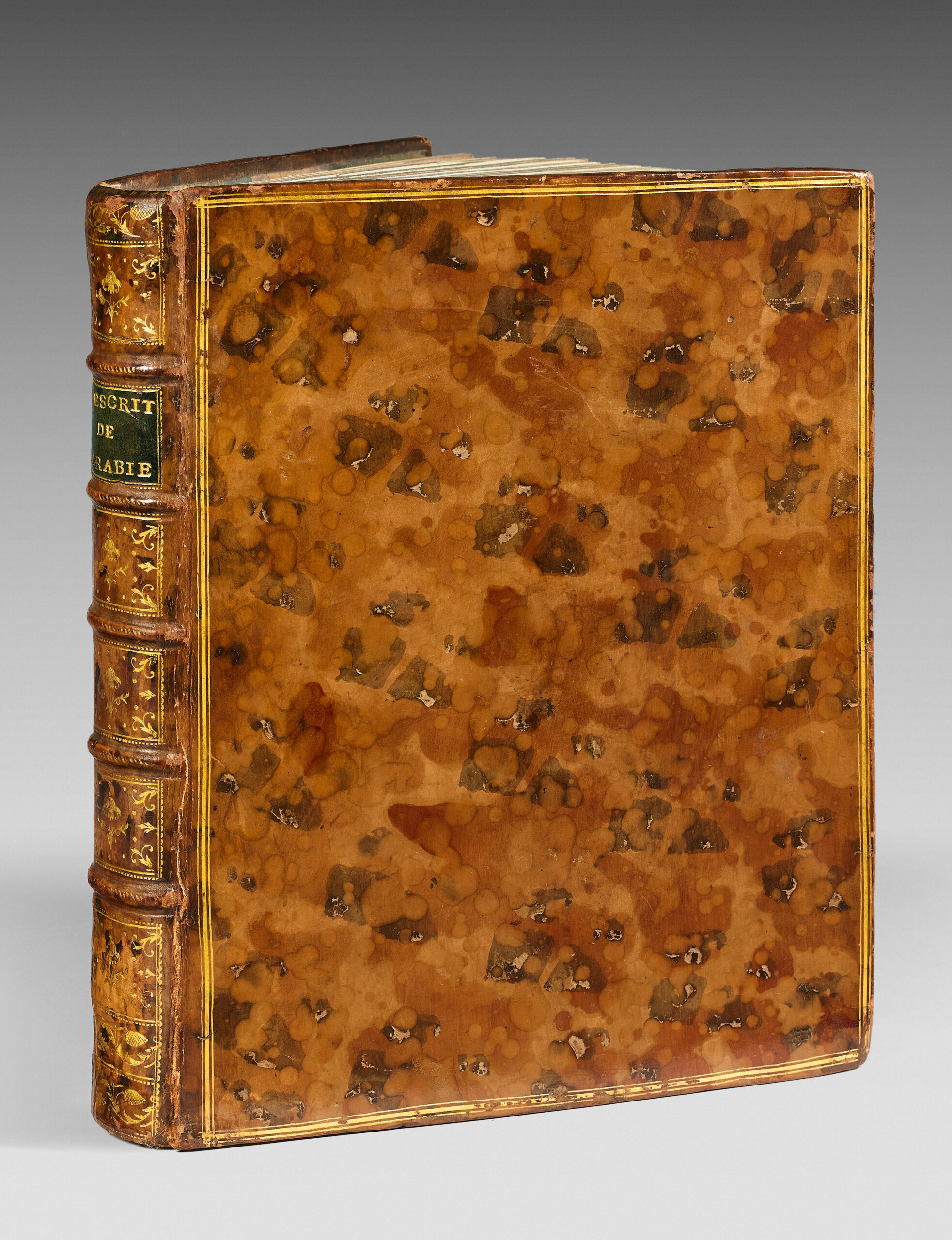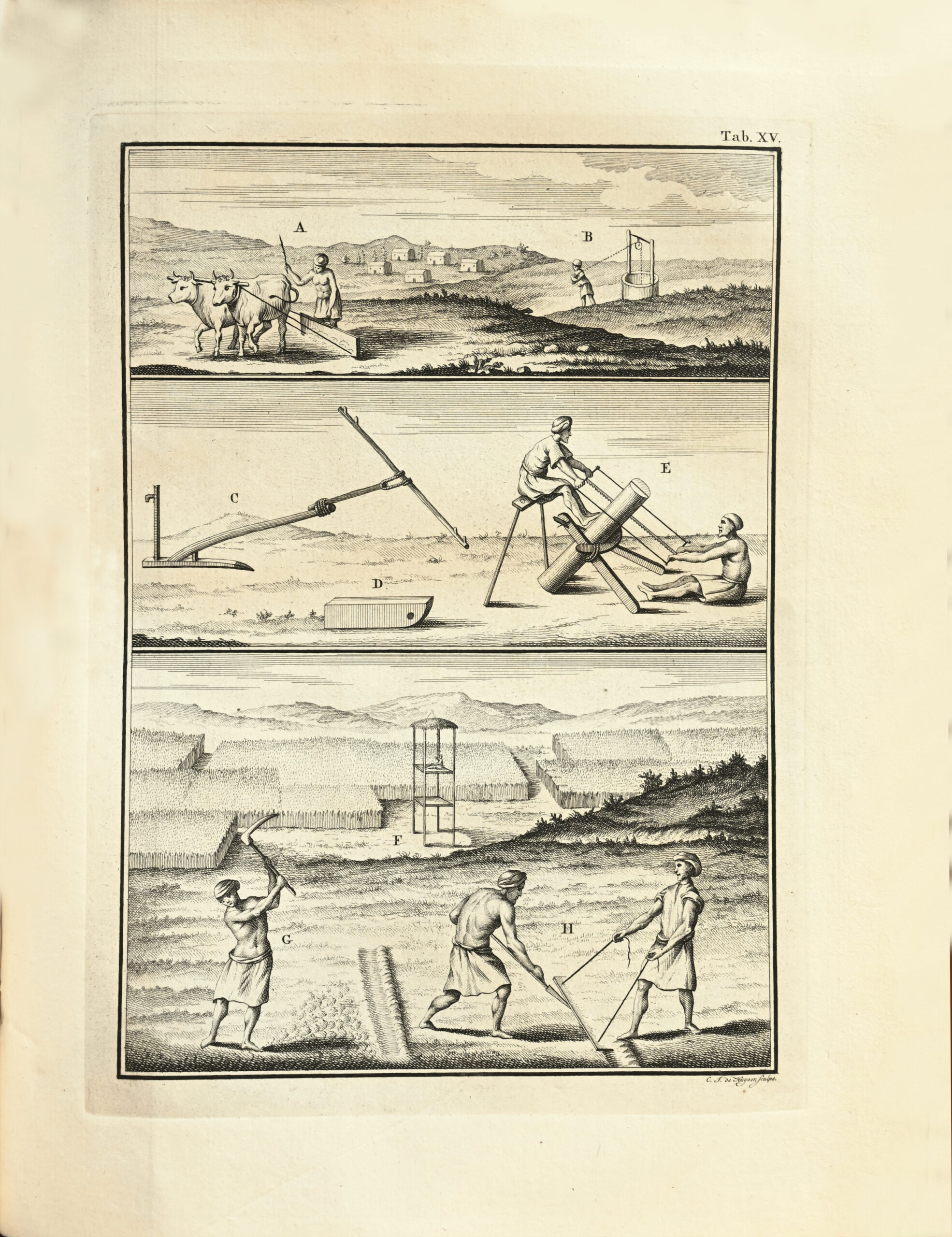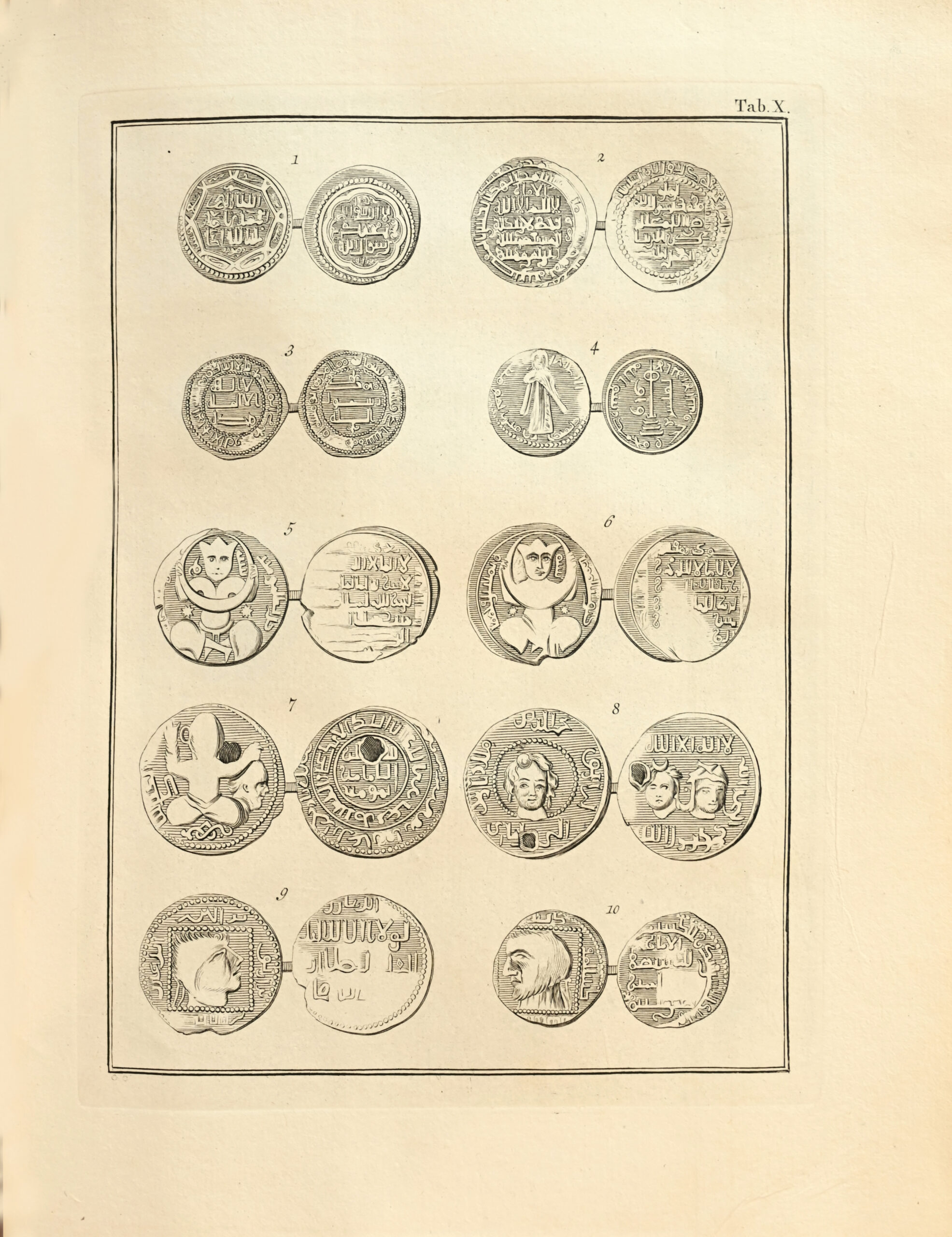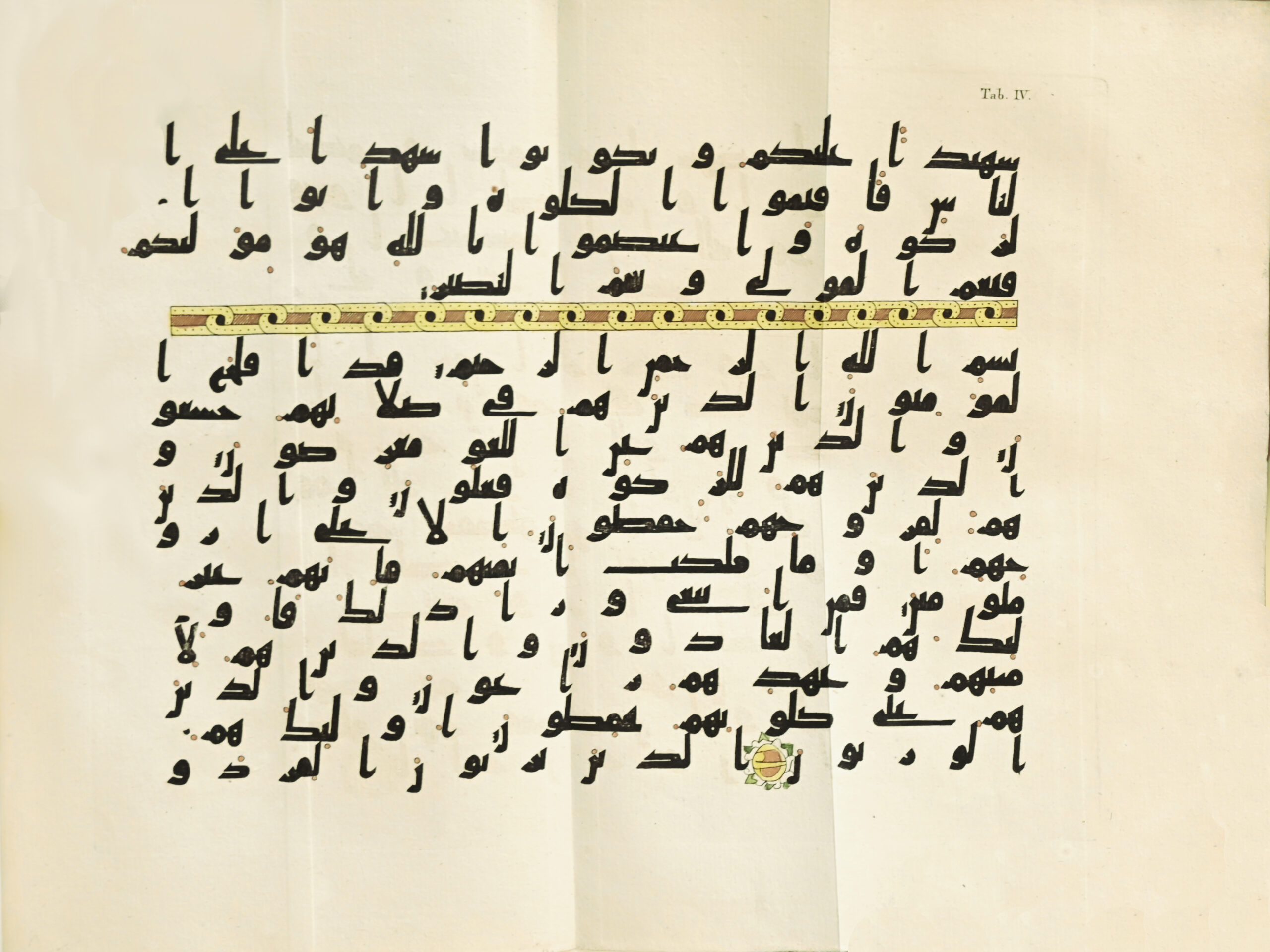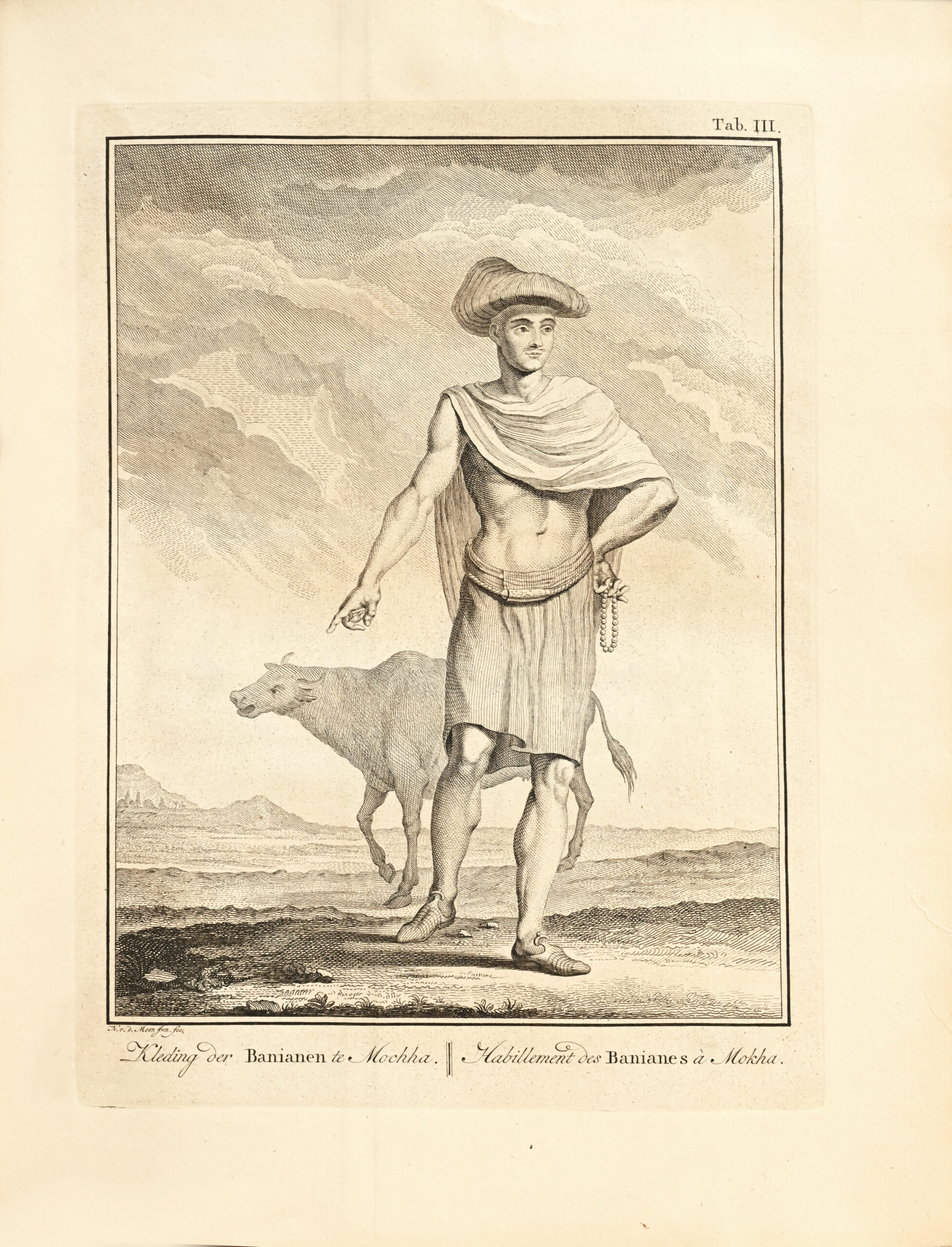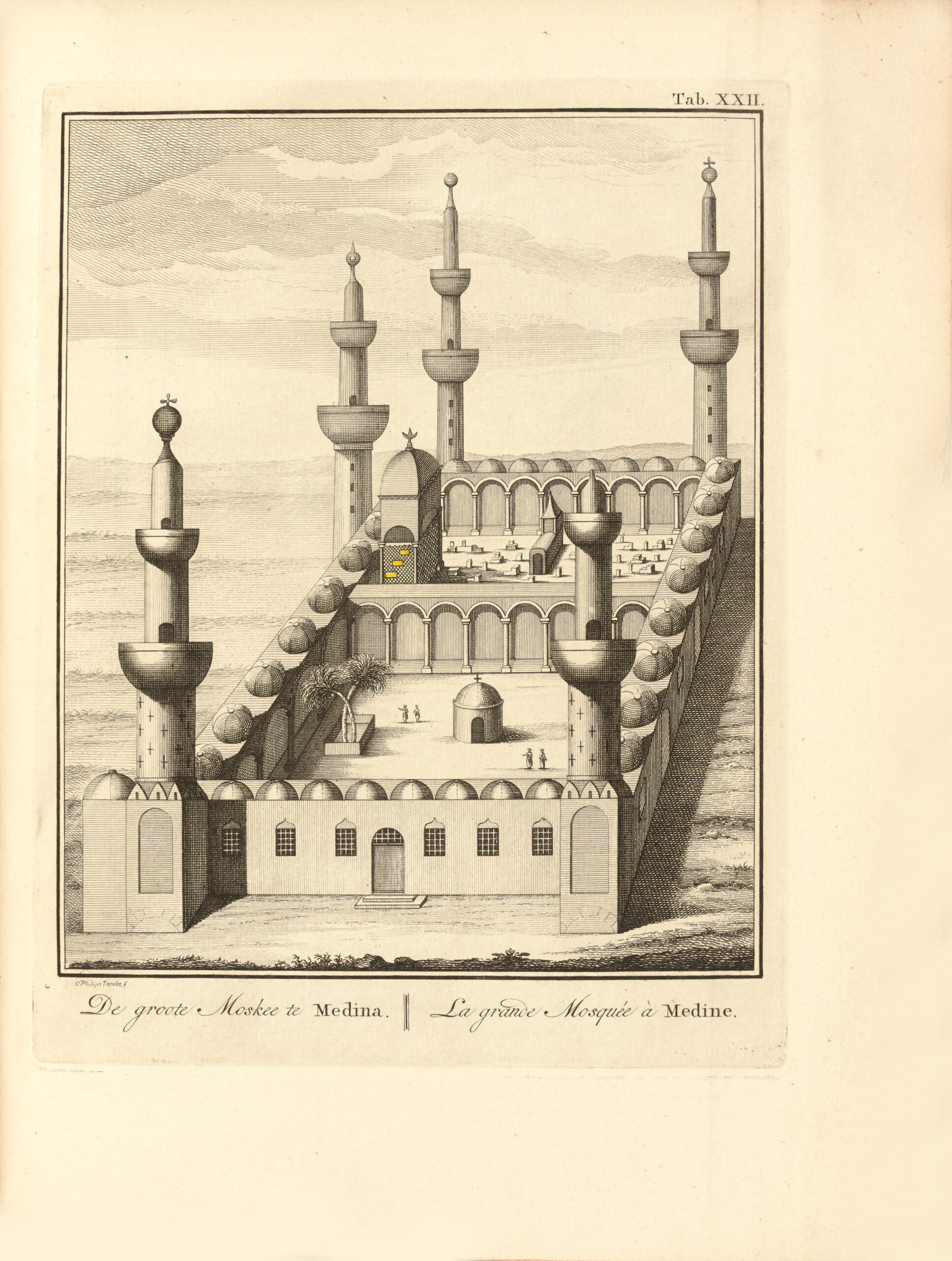Amsterdam, S.J. Baalde, 1774.
4to of xlii pp., 372 pp., (6) ll. of table and 1 l. of errata, 26 plates: 1 folding genealogical table, 24 plates some folding, and one large folding map (small tear without loss on the map).
Full marbled Havana calf, triple gilt fillet border on covers, richly gilt spine with raised bands, green morocco title label, double gilt fillet on edges, marbled edges. Contemporary binding.
260 x 203 mm.
Very rare first French edition published one year after the first German edition.
Gay 3589 ; Hage-Chahine no. 3439 ; Cox I.327.
In 1760, one of his teachers suggested that the German Niebuhr join the scientific exploration team that King Frederick V of Denmark was preparing to send to Egypt, Arabia, and Syria.
In order to qualify for this work, he diligently studied mathematics, cartography, and astronomy with Tobias Mayer (1723–1762), one of the greatest astronomers of the 18th century, author of the method of determining longitude by lunar distance, during the eighteen months preceding the expedition’s departure. Niebuhr’s observations during the expedition in Arabia proved that using this method at sea was both accurate and practical.
During this preparation period, Niebuhr also managed to acquire some rudimentary Arabic. The expedition set sail on January 4, 1761 and, having arrived in Alexandria on the evening of September 26, traveled throughout the Nile Delta region for a year. Then, in September 1762, the expedition went to Suez. From there, Niebuhr went to Mount Sinai and, in October 1762, the expedition left Suez for Jeddah. Arriving in the port city of present-day Yemen in the autumn of 1762, the five scientists then sailed to Al Luḩayyah and continued their expedition on donkey or camelback through the Tihāmah, the mountainous region of southwestern Yemen. On the road from Mocha to Ta’izz, Frederik Christian von Haven (1728–1763), Danish orientalist philologist and theologian, died of exhaustion and illness, followed shortly after by the Swedish naturalist Pehr Forsskål (1732–1763). The surviving members then visited Sanaa in July 1763, but suffered so greatly from the climate and lifestyle that they returned to Mocha on August 5.
Niebuhr recovered his health by adopting local dress and dietary habits, as he explains in his Description of Arabia: “Myself, wishing at the time of my companions to live as they did, in the European manner, I endured several serious illnesses; but afterwards, being surrounded only by Orientals and learning how one should conduct oneself, I traveled through Persia and from Basra overland to Copenhagen in good health, and without encountering much difficulty from the inhabitants of those countries.”
(Carsten Niebuhr, Description of Arabia, pp. VIII–IX).
From Mocha, the expedition left the Arabian Peninsula on August 23, 1763 for Bombay. The German draftsman Georg Wilhelm Baurenfeind (1728–1763) died during the crossing, and the physician Christian Carl Cramer (?-1764) shortly afterward in Bombay. Niebuhr, now the sole surviving member of the expedition, remained 14 months in Bombay, then returned to Denmark via Muscat, Bushehr, Shiraz, and Persepolis, visiting the ruins of Babylon and then traveling to Baghdad, Mosul, and Aleppo. After a detour through Cyprus, he visited Palestine, crossed the Taurus Mountains to reach Bursa, arrived in Constantinople in February 1767, and reached Copenhagen ten months later.From this Danish expedition, Carsten Niebuhr left behind two sources: his travel account Voyage en Arabie, translated into French and published in 1774, and his Description of Arabia, translated and published in 1772.
His travel account is certainly the best and most authentic of his era. He is also the first Westerner to note the emergence of Wahhabism in Arabia.
The present edition is illustrated with 26 engravings. His map of Yemen is the first scientific cartography of the region.
Beautiful copy in contemporary binding.
